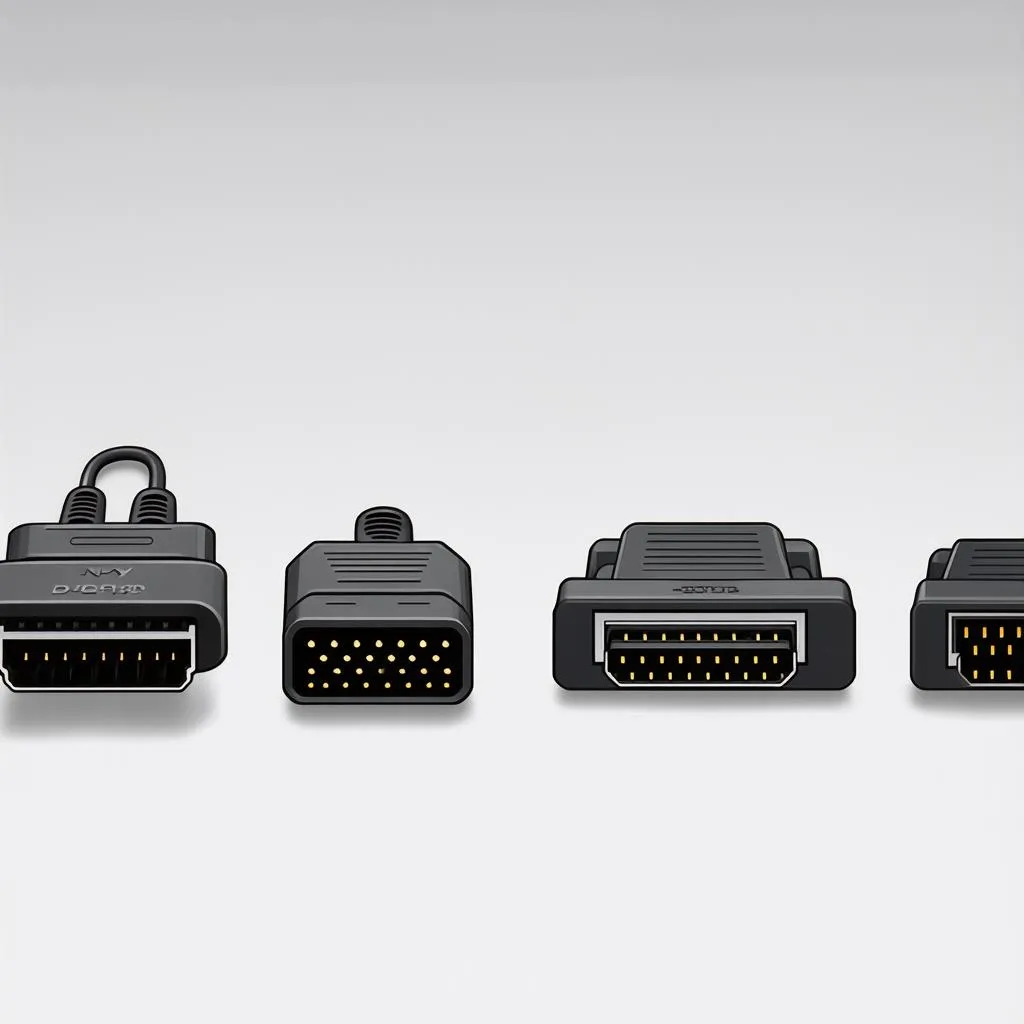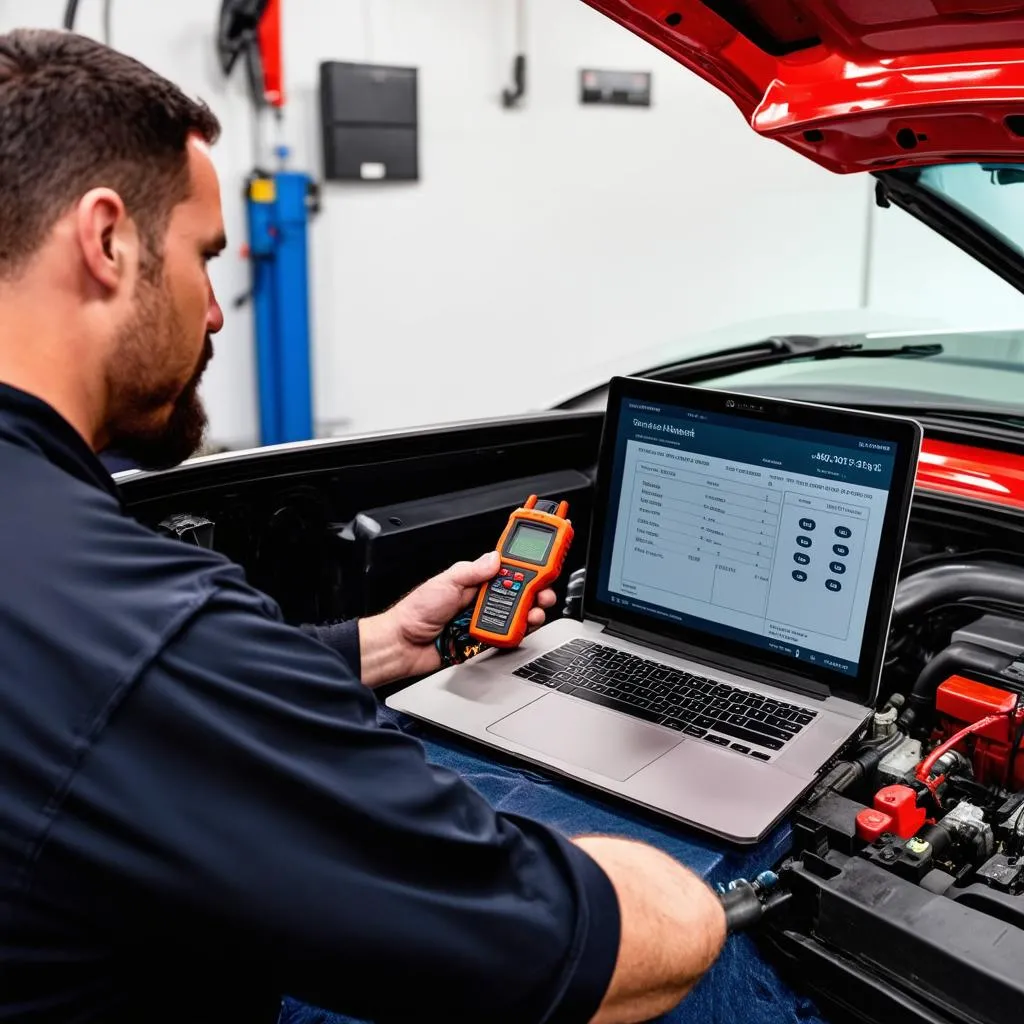Imagine this: You’re driving down a scenic highway, the wind in your hair, when suddenly – engine trouble. Your “Check Engine” light throws a tantrum brighter than a toddler denied candy. In the past, this scenario might have sent you into a spiral of confusion. What’s wrong? Where do you even start?
Thankfully, modern cars are a bit like open books, (well, more like open laptops), thanks to onboard diagnostic systems, better known as OBD. These systems, accessed through OBD ports, act as a direct line to your car’s computer, revealing those cryptic engine codes that mechanics use to diagnose problems.
But there’s a catch: OBD systems come in two flavors – OBD1 and OBD2. So, what’s the difference, and why should you care? Buckle up, because we’re about to dive deep into the world of OBD ports.
Decoding the OBD Jargon: What’s the Difference Between OBD1 and OBD2?
The difference between OBD1 and OBD2 is akin to the leap from flip phones to smartphones. While both serve the purpose of communication, the latter offers a universe of expanded functionality. Let’s break it down:
OBD1: Think of this as the pioneer. Introduced in the late 1980s, OBD1 was a rudimentary system, often manufacturer-specific. Diagnosing problems involved a jumble of connectors, blinking lights, and a whole lot of head-scratching.
OBD2: This is where things get interesting. Standardized in 1996, OBD2 revolutionized car diagnostics. This universal system boasts a standardized 16-pin connector, allowing for consistent communication across different vehicle makes and models.
Why the Shift to OBD2?
Several factors contributed to OBD2’s rise to prominence:
- Standardization: The universal connector and communication protocol made diagnostics easier for mechanics, eliminating the need for a dozen different connectors.
- Environmental Concerns: OBD2’s focus on emissions control aligned with growing environmental awareness.
- Technological Advancement: As cars became increasingly computerized, a robust diagnostic system like OBD2 was essential.
Spotting the Difference: OBD1 vs OBD2 Ports
Visually, the difference is stark:
- OBD1: These ports often resembled a jumble of different connectors, with no set standard for location.
- OBD2: Easily identifiable by its distinctive 16-pin trapezoidal shape, the OBD2 port is typically located under the driver’s side dashboard.
 OBD ports
OBD ports
The Power of OBD2: Beyond Just Diagnostics
Here’s where OBD2 really shines. This system isn’t just about reading engine codes; it’s become a gateway to a wealth of information about your car’s health and performance:
- Real-time Data: OBD2 allows you to access live data streams from various sensors, monitoring everything from engine speed and temperature to oxygen sensor readings and fuel economy.
- Emissions Monitoring: OBD2 plays a crucial role in ensuring your car meets emissions standards, tracking and reporting any issues that might impact the environment.
- DIY Diagnostics: With an affordable OBD2 scanner and a bit of know-how, you can empower yourself to diagnose basic car problems, potentially saving time and money on unnecessary trips to the mechanic.
OBD2 and You: What Does It Mean for Car Owners?
The widespread adoption of OBD2 has brought significant benefits to car owners:
- Easier Troubleshooting: Diagnosing car problems is no longer a guessing game. OBD2 provides clear, concise codes that pinpoint the source of the issue.
- Increased Transparency: OBD2 empowers car owners with information about their vehicles, promoting a better understanding of maintenance needs.
- Cost Savings: Early detection of problems through OBD2 can prevent minor issues from snowballing into major (and expensive) repairs.
Frequently Asked Questions About OBD1 and OBD2
Here are some common questions we hear from car owners:
Q: My car is from 1994. Does it have an OBD port?
A: Cars manufactured before 1996 may have an OBD1 system, but the connector type and location can vary significantly.
Q: Can I use an OBD2 scanner on an OBD1 car?
A: No, OBD2 scanners are not compatible with OBD1 systems. You’ll need a specialized OBD1 scanner or adapter.
Q: What kind of information can I get from an OBD2 scanner?
A: OBD2 scanners can provide a wealth of data, including engine codes, live sensor readings, emissions data, and even vehicle identification numbers (VIN).
Q: Can I clear my own “Check Engine” light with an OBD2 scanner?
A: Yes, most OBD2 scanners allow you to clear engine codes. However, it’s essential to address the underlying problem that triggered the light in the first place. Simply clearing the code without fixing the issue is like silencing a fire alarm without putting out the fire.
 Car diagnostics
Car diagnostics
Beyond OBD: Dealer-Level Diagnostics for European Cars
While OBD2 scanners offer a valuable glimpse into your car’s health, they often lack the depth and sophistication of dealer-level scan tools, especially for European vehicles. These advanced systems, like our specialized Dealer Scanners for European Cars, provide:
- Deeper Diagnostic Capabilities: Access to manufacturer-specific codes and data that generic OBD2 scanners might miss.
- Advanced Programming Functions: Perform tasks like key programming, module coding, and software updates, often requiring dealer-level access.
- Comprehensive System Coverage: Scan and diagnose a wider range of vehicle systems, including transmission, ABS, airbags, and more.
Unlocking Your Car’s Full Potential: Techcarusa.com is Here to Help
Whether you’re a DIY enthusiast or simply want to understand your car better, navigating the world of OBD systems can be daunting. That’s where Techcarusa.com comes in.
We offer a wide range of diagnostic tools and resources to help you unlock the secrets under your car’s dashboard. From affordable OBD2 scanners to powerful Dealer Scanners for European Cars, we have the right tools for your needs.
Have a question or need assistance choosing the right diagnostic tool? Contact us on Whatsapp at +84767531508. Our team of automotive experts is available 24/7 to assist you.
Keep Exploring the World of Automotive Technology
Looking for more insights into the fascinating world of car diagnostics and repair? Explore these related topics on Techcarusa.com:
- Understanding European Car Diagnostics
- Choosing the Right OBD2 Scanner for Your Needs
- Common OBD2 Codes and What They Mean
Let us be your trusted guide in the ever-evolving landscape of automotive technology.